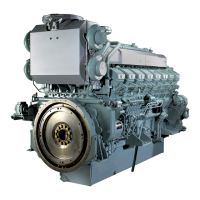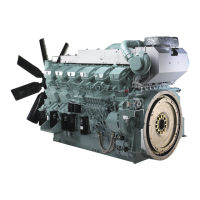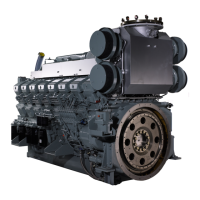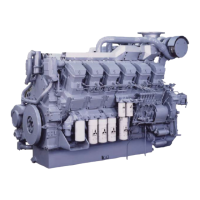8-3
Chapter 8 PERIODIC INSPECTION AND MAINTENANCE PROCEDURES
Damper - Inspect
Damper - Check visually
Check the vibration damper for oil leakage, scratches,
deformation, discoloration and peeling of paint. Check
carefully for swelling on the cover (use a scale), oil
leaks from the shim, discoloration and peeling of paint
due to heat.
Note: If defects are found in the damper, contact a
dealer of Mitsubishi Heavy Industries, Ltd.
Fig. 8-2 Damper - Check visually
Damper temperature management
For making damper function well, heat of damper must be dissipated from its surface to prevent excessive damper
heating. Mitsubishi Heavy Industries, Ltd. inspects each engine before shipment to ensure proper operating temper-
ature of the vibration damper. However, the vibration damper temperature varies depending on ambient conditions.
Therefore, observe the following suggestions and provide sufficient ventilation for the vibration damper and equip-
ment.
1. Make sure the temperature of the outside damper surface does not exceed 90 °C [194 °F] when operating the
engine with rated power for an hour.
2. When installing a safety cover to damper, check ventilation carefully and make sure the damper temperature re-
mains below 90 °C [194 °F], with the cover in place.
3. It is recommended to use the thermo label for temperature management.
When installing a damper protective cover to the
engine, do not use a cover that encloses the damper.
Installation of a closed cover can cause damper
damage due to heat.
Cover
Silicon
oil
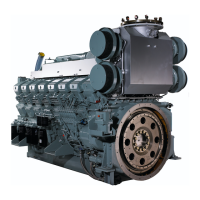
